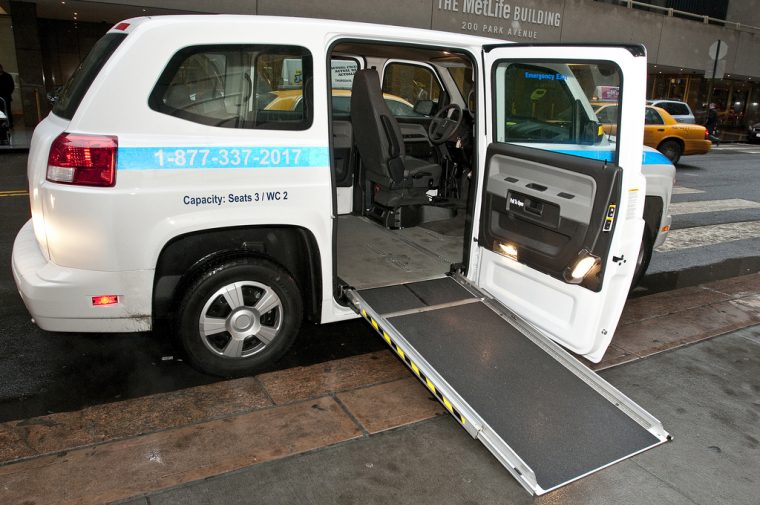Complexities of Determining How Self-Driving Cars Impact Disability Mobility

Could handicap-accessible vehicles like this be self-driving one day?
Photo: Metropolitan Transportation Authority of the State of New Yorkvia cc
While autonomous vehicle technology is still in the early stages of development, people around the globe are already imagining how convenient self-driving cars will be. Many people imagine the simplicity and ease of allowing a car to take over driving while they watch a movie.
Although self-driving cars will make daily commutes more convenient and peaceful for many people, the technology has a potentially far greater impact on people with disabilities. The majority of the population takes the everyday operation of vehicles for granted, while many demographics are limited in their daily transportation options due to physical or mental impairments. Autonomous transportation holds many possibilities to revolutionize transportation for those with as-yet-limited options, but determining how exactly self-driving cars impact disability mobility is complicated.
Did You Know Google Maps Has a New Wheelchair Accessibility Feature? Check out how this useful tool works!
Essentials for ensuring self-driving cars impact disability mobility successfully
 Disability advocates agree that self-driving transportation holds many valuable possibilities for expanding the mobility and independence of those with physical and mental impairments. Yet, they recognize that implementing these advancements successfully will require many specific, essential accommodations to be successful.
Disability advocates agree that self-driving transportation holds many valuable possibilities for expanding the mobility and independence of those with physical and mental impairments. Yet, they recognize that implementing these advancements successfully will require many specific, essential accommodations to be successful.
The biggest aspect of making self-driving cars accessible for those with disabilities is in the methods the vehicles communicate to and receive input from the operating passenger. For instance, blind passengers will need a voice-activated command/reporting interface and braille surfaces. Deaf passengers will need visual cues on screens that are easily readable and utilize supplementary indicators (e.g., flashing lights).
“Even though people aren’t driving, we know that a sense of control is essential,” said Waymo project manager Juliet Rothenberg, in an interview with The Washington Post about the company’s testing of self-driving cars.
An aspect of handicap-accessible transportation that autonomous tech could revolutionize is the current paratransit system. Currently, public transit agencies offer reservable pick-up and drop-off services for those with disabilities. With the evolution of self-driving transportation, the process could cut out the presence of the agency driver and result in a handicap-accessible vehicle driving itself to pick up the passenger and drop them off at their destination.
As with current handicap-accessible vehicles, self-driving ones will need to be outfitted for wheelchair access and arm/foot controls as necessary. Plus, cars will need to know where to park so that occupants can easily enter/exit the vehicle at wheelchair-accessible places. That’s a lot to expect of a still-emerging technology, so don’t expect progress in these areas any time soon.
Developing handicap-accessible self-driving cars is a balancing act. The main focus right now is in developing and regulating the basic technology, but the requirements of the Americans with Disabilities Act can’t be ignored — neither should it solely direct or hinder development, either.
Tips for Travelling in Your Wheelchair Van: Advice to ensure a safe, successful long-distance travel
Sources: Smithsonian Magazine, The Washington Post, Shared Use Mobility Center

The News Wheel is a digital auto magazine providing readers with a fresh perspective on the latest car news. We’re located in the heart of America (Dayton, Ohio) and our goal is to deliver an entertaining and informative perspective on what’s trending in the automotive world. See more articles from The News Wheel.

